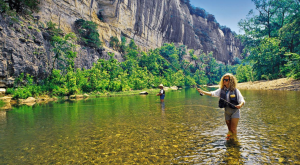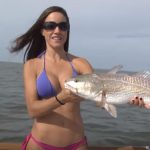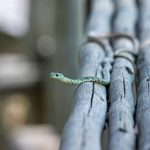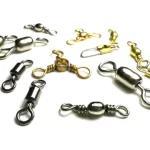Spring creek fly fishing is a favorite among anglers who love clear water, cautious fish, and technical presentations. These creeks, often fed by underground springs, maintain steady flows and temperatures, making them ideal for springtime fly fishing. But because of their unique features—gin-clear water, skittish trout, and smaller hatches—choosing the right setup is crucial. Here’s how to dial in the ideal fly fishing gear for spring creek success.
The Right Rod: Go Light and Precise
For spring creeks, finesse matters. A 3- or 4-weight fly rod between 8 to 9 feet offers the perfect balance of delicacy and reach. Look for rods with a moderate to fast action, which allow for accurate casts in tight quarters and soft fly landings that won’t spook wary trout. If the stream is especially narrow or tree-lined, a shorter rod (around 7.5 feet) might be a better fit.

Match Your Reel to Your Rod
While spring creek fish don’t often take long runs, a quality reel with a smooth drag system is still important—especially when using ultralight tippet. Make sure the reel is balanced with your rod to maintain casting efficiency and reduce fatigue. Lightweight large-arbor reels are a solid choice for quicker line pickup and tangle prevention.
Line Selection: Go Weight-Forward and Subtle
A weight-forward floating line works best in most spring creek scenarios. Look for lines labeled “presentation” or “trout” which are designed for delicate delivery. Avoid overly aggressive tapers which can slap the water and spook fish. If fishing during low flow or extremely clear conditions, consider using a double taper line for added finesse.
Leaders and Tippet: Think Stealth
Stealth is everything when fly fishing spring creeks. Start with a 9-foot leader, and in especially spooky water, extend it to 12 feet or more. Use fluorocarbon tippet in sizes ranging from 5X to 7X depending on fly size and water clarity. Thinner tippet allows for a more natural drift and better invisibility in the water.
Flies That Get Results
Spring creeks are often home to small, subtle insect life. Key patterns to include in your fly box:
-
Baetis (Blue-Winged Olive) dries and nymphs
-
Midges in sizes 18–24
-
Scuds and sowbugs, especially in weedy creeks
-
Cress bugs and small mayfly nymphs
-
Terrestrials like ants and beetles (later in spring)
Presenting these patterns with accurate casts and dead drifts is the name of the game.
Bonus Tips for Spring Creek Success
-
Approach with care: Stay low, wear earth tones, and approach pools from downstream.
-
Watch the hatch: Spring creeks often have predictable hatches. Use a hatch chart or talk to local fly shops to prepare.
-
Practice patience: Spring creek trout are observant and selective. It may take multiple casts before they commit.
Whether you’re a seasoned fly fisher or just getting into the game, dialing in the right setup for spring creek conditions will significantly improve success rates. With the right rod, reel, line, and fly selection, anglers can experience one of the most rewarding types of trout fishing spring has to offer.
Image: arkansas.com





